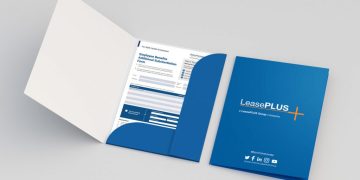Environmental service managers should be careful when choosing the flooring they will use for their establishments. Although there’s a broad range of flooring options, each with advantages and disadvantages, carpet is one of the top and most well-known selections.
It’s well-known that carpeting is among the most cost-effective and affordable kinds of available flooring. It is less well-known because of the numerous health benefits it offers. Carpets serve as air purifiers in the indoor environment by capturing dust and pollutants as well as airborne pathogens that are present in the fibers, thus preventing these substances from circulating in the air and spreading to undesirable regions.
A single sq ft of carpet could contain as much as 1 pound of dirt or dust. In addition, nurses and medical professionals are walking through your flooring each day; it’s vital to follow a regular maintenance and cleaning schedule that includes regular vacuuming along with regular deep cleaning by professionals to ensure that your carpet is in a position to fulfill its function of assisting in the creation of cleaner healthy air.
How to choose the right carpet?
Here are some suggestions for choosing the right carpet for your space and the most effective methods to keep it clean and maintained:
Selecting the appropriate carpet material can make waiting rooms or meeting rooms, as well as other areas that are prone to circulation, more comfortable, healthier, and more secure. The ideal carpet to use in the health facility is commercial-grade, high-impact nylon. It is extremely stain-resistant and resilient. It reduces the possibility of spills spreading back to the floor and is more easy to keep clean compared to other types of fiber.
Also, it’s important to be aware that most of the dirt from the outside is trapped in the carpets for the first thirty feet from the entryway. According to a University of Arizona study, nine kinds of pathogens or bacteria can thrive in sole shoes and be brought into a home or any other indoor space.
Due to the role carpets and rugs play in catching the spores and allergens and also stopping them from circulating in the air, putting mats that can be removed at each entry point will prevent dirt and other harmful elements from further absorbing into the structure. This helps your carpets remain cleaner and also helps maintain the durability of your floor.
The most secure and effective methods to clean carpets in Hospitals
In hospitals that are crowded and health establishments, it is essential to ensure that carpets are maintained in the most efficient and secure ways. Extraction cleaning -processes that lift upwards and physically remove what’s coming up from carpets from the area, typically with hoses and tanks- are advised as the most secure method to clean the fibers of dust, allergens, and excessive cleaning products.
Make sure to schedule the cleaning at the slowest time to reduce disruption and inconvenience to your daily schedule and routines. Also, to ensure safety, let the patients and residents be aware that the cleaning process is taking place by displaying wet-floor signage, especially around any areas of transition. Utilize hose ramps or guards to assist people in crutches and wheelchairs to easily cross equipment, hoses, or hoses lying on the floor. Click information here!
Choose an option that has drying times of a couple of hours to avoid additional risk to your health and safety. Techniques like traditional steam cleaning, which uses large amounts of water, typically require days to dry.
This can increase the risk of slip-and-fall and result in water leaking through the backing of the carpet, creating the perfect environment for mold, mildew, and other microorganisms. The shorter dry time comes with different dangers. Any cleaning method can be used, and drying times are cut down through the use of fans.
How often should carpets in health centers be cleaned?
Benjamin Franklin’s famous quote, “An ounce of prevention is worth a pound of cure,” also applies to cleaning and maintaining carpets. Carpets can hold a lot of dust and other allergens; however, they must be regularly cleaned to prevent wear and tear and keep them clean to play their essential function as air filters.
In general, If you begin to notice soil accumulating on the roadways, then you’ve been waiting too long. Making sure you take the proper steps to protect your carpet is the best option for patients and residents and is also more affordable. Regular cleaning of carpets will be significantly less expensive than replacing carpets.
Carpets must be professionally deep-sealed and disinfected every six months. Plenty of establishments do this every quarter or even every month. All carpets should be kept regularly maintained. Also, areas with a lot of traffic, like entryways and hallways, must be maintained more often.
Reducing damage and prolonging carpet life
The most crucial maintenance procedure to prolong the life of your carpet is frequent cleaning. It involves three steps:
Clean and regular vacuuming.
Choose a commercial-grade vacuum with an adjustable beater bar/brush and microfiltration systems. A good vacuum is worth the cost. In accordance with the traffic volume, the vacuuming process should be carried out often throughout the week, particularly in areas with high traffic. Generally, bag-style vacuums are the best choice. The bags should be cleaned when they’re two-thirds full.
Professional extraction cleanings should be performed every quarter for heavily trafficked areas and, at minimum, every six months for other areas. Choose an establishment that utilizes non-toxic and safe cleaning solutions and offers sanitizers and carpet protection products. Drying times should be within a couple of hours, but ideally within one to two hours to stop mold and bacterial development and reduce the inconveniences to residents and patients.
Surface cleaning/spot clean-up
Spots and spills will always happen. The sooner you deal with the spot, the more easy it will be to get rid of. When spots appear, you should get them cleaned up fast using suitable spotting products. Many cleaning companies provide regular spot cleaning as part of a regular maintenance program.
Cleaning spots can prove difficult, so stay clear of spot-cleaning products with many soaps or surfactants that leave dirt-attracting substances. The best first step is to blot any new spot or spill with a clean white cloth to eliminate excess liquids and keep the stains from extending further into the carpet’s fibers.
Ensuring that your medical facility is secure and has clean floors is crucial for providing the highest quality customer service and making your facility a healthier living and working space. By using these methods, you will ensure that your medical home is as clean as possible, protect the flooring investment you have made, and provide your patients and residents with a more secure, healthier, and more enjoyable experience.




















